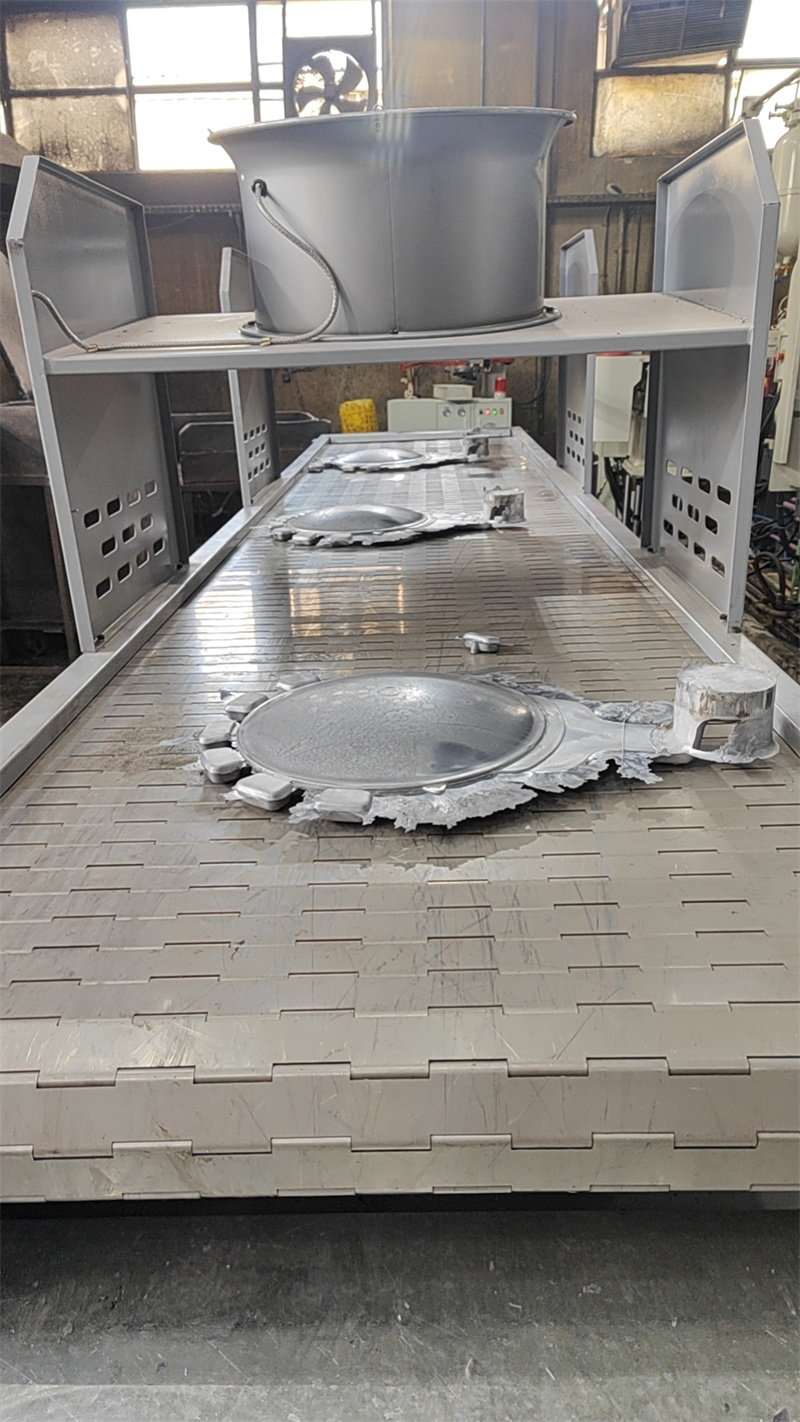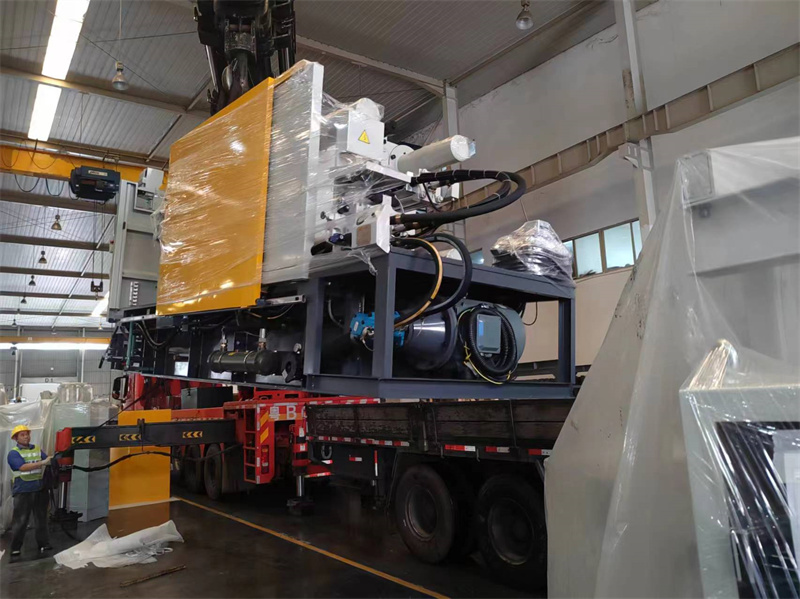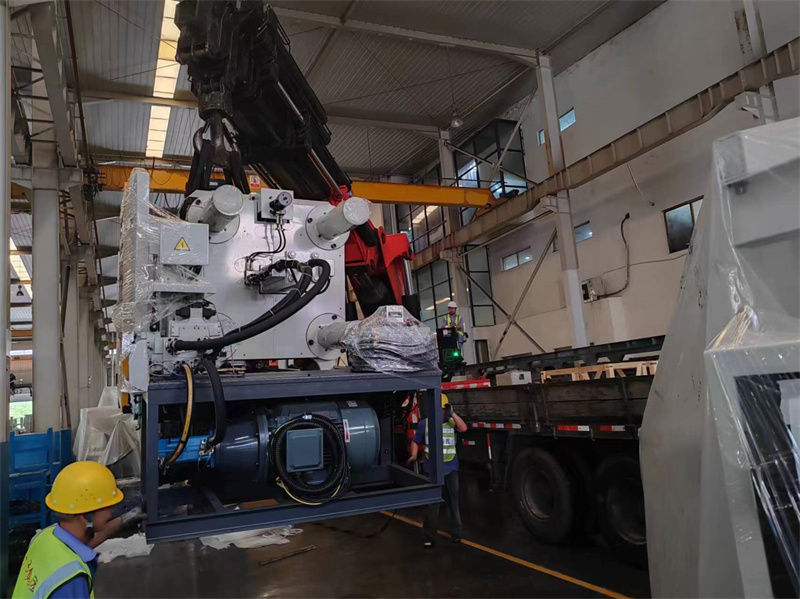7075 Billet Aluminum VS 4140 Steel
LK Die Casting Machine / 2024-09-20 15:11:08
2024-09-20 by Cherry
In modern manufacturing, 7075 Billet Aluminum VS 4140
steel is two very representative materials, each with
unique characteristics, and are widely used in die-casting
machines. Understanding the application of these two
materials in the die-casting process can not only improve
production efficiency, but also optimize the performance
of the final product.

Characteristics of 7075 Billet Aluminum
7075 Billet Aluminum is a high-strength aluminum alloy
material, which contains alloying elements such as zinc
and magnesium.
This combination of ingredients gives it extremely
high strength - close to the strength of many sheets
of steel, while maintaining some excellent properties
of aluminum, such as lightweight and good corrosion
resistance.
7075 aluminum alloy is one of the aluminum alloys widely
used in the aerospace and automotive industries. The
main components include aluminum, zinc, magnesium, and a
small amount of copper. Its main characteristics are
as follows:
1. High strength: The tensile strength and yield strength
of 7075 aluminum alloy are very high, suitable for
structural parts that require high strength.
2. Lightweight: Compared with steel, 7075 aluminum alloy
has a lower density, which can effectively reduce the
overall weight of the product and improve the performance
of the product.
3. Good corrosion resistance: After surface treatment, 7075
aluminum alloy can effectively resist oxidation and
corrosion and is suitable for harsh environments.
4. Good machinability: 7075 aluminum billets are easy to
machine and weld, making it easy to manufacture complex
parts.

Working principle of die casting machine
A die-casting machine is a device specially used to inject
molten metal into a mold to form a casting. It's basic
working process is as follows:
1. Melting metal: Heat 7075 aluminum billets or 4140 steel
to a molten state and prepare for die casting.
2. Injection into mold: Inject molten metal into a pre-prepared
mold under high pressure to ensure that the metal can
quickly fill the mold cavity.
3. Cooling and solidification: In the mold, the molten metal
quickly cools and solidifies to form a casting.
4. Remove the casting: open the mold after cooling and take
out the formed casting.
4. Post-processing: The casting may require subsequent
processing, such as machining or surface treatment, to meet
the final product standards.

Relationship between 7075 Billet Aluminum and die
casting machine
1. The pressure system of the die-casting machine plays a
decisive role in the die-casting process of 7075 Billet
Aluminum
Due to the high strength of the 7075 aluminum billet, the
die casting machine needs to provide sufficient pressure
to ensure that the aluminum billet can smoothly fill the
mold cavity. It is like pushing a stubborn child into a
specific space and sufficient force must be applied.
The injection pressure of the die-casting machine must
be precisely controlled. If the pressure is insufficient,
the 7075 aluminum billet may not be able to fill the mold,
resulting in defects in the casting, such as lack of meat
or incomplete shape.
2. Moreover, the melting point of 7075 aluminum billet is
relatively high, which puts strict requirements on the
temperature control system of the die-casting machine
The die-casting machine needs to be able to heat the mold to
a suitable temperature range to ensure that the 7075
aluminum billet maintains good fluidity during the die-casting
process.
Just like a chef must accurately control the heat when
cooking a delicate dish. If the mold temperature is too
low, the fluidity of the 7075 aluminum billet will
deteriorate, and cold shut will easily occur, just like
water will freeze at low temperatures and cannot flow
smoothly; while too high a temperature may cause the
aluminum billet to overheat, affecting its final mechanical
properties.
3. In terms of molds, due to the high strength of 7075
aluminum billets, the material, and structural strength
requirements of the molds used by the die-casting machine
are also very high
The mold must be able to withstand high pressure during
the die-casting of 7075 Billet Aluminum and must ensure
sufficient wear resistance.
Because during the die-casting process, the wear of the
7075 Billet Aluminum on the mold is relatively serious.
If the mold is not durable, frequent mold replacement will
not only increase production costs but also affect production
efficiency.
Application of 7075 Billet Aluminum in die-casting
machine
The application of 7075 Billet Aluminum in die-casting
machine is mainly reflected in the following aspects:
1. Aerospace field: Due to the high strength and lightweight
characteristics of 7075 aluminum alloy, it is widely used
in die casting of aircraft parts, such as fuselage brackets
and connectors.
2. Automotive industry: In the automotive industry, 7075
aluminum alloy is used to manufacture engine components
and body structural parts, which can effectively improve
fuel efficiency.
3. Sports equipment: 7075 aluminum alloy is widely used in the
manufacture of high-end sports equipment, such as bicycle
frames and ski equipment, due to its excellent strength-to-weight
ratio.
Characteristics of 4140 steel
4140 steel is a medium-carbon alloy steel. It is known for
its good toughness, strength, and wear resistance. It is also
a low-alloy high-strength steel with the main components of
iron, carbon, chromium, and molybdenum. Its main characteristics
include:
1. Excellent strength and toughness: After heat treatment, 4140
steel shows extremely high strength and toughness, suitable
for heavy-load applications.
2. Good wear resistance: This steel has excellent wear resistance
and is suitable for working conditions that need to withstand
wear.
3. Suitable heat treatment performance: 4140 steel can achieve
different hardness and strength through heat treatment, and
has strong process flexibility.
4. Good weldability: Under appropriate welding conditions, 4140
steel can achieve high-quality welding connections.
Application of 4140 steel in die-casting machines
The application of 4140 steel in die-casting machines is mainly
concentrated on the manufacture of heavy-duty mechanical
parts, which is specifically reflected in:
1. Mechanical equipment: The high strength and wear resistance
of 4140 steel make it an ideal material for key components
in mechanical equipment, such as gears, shafts, and connecting
rods.
2. Construction industry: In some load-bearing structures, 4140
steel is widely used in die-casting machines to manufacture
high-strength support components.
3. Mold manufacturing: 4140 steel is suitable for mold
manufacturing due to its good wear resistance and hardness,
which improves the service life of the mold.
A 7075 Billet Aluminum vs 4140 steel in die casting
There are some similarities between the use of 7075 aluminum
billet and 4140 steel in die casting, but there are also
significant differences.
1. The melting point of 4140 steel is much higher than that
of 7075 aluminum billet, which means that the die-casting
machine needs a higher temperature to keep 4140 steel in
a liquid state that can be die-cast. The heating system of
the die-casting machine must be powerful enough to meet
the die-casting needs of 4140 steel. This is like melting
a harder piece of ice, which requires more heat.
2. In terms of pressure, 4140 steel requires greater
pressure to push it to flow in the mold during die-casting
due to its higher density and hardness. The clamping force
of the die-casting machine also needs to be increased accordingly
to prevent the molten steel from overflowing from the gap
of the mold under high pressure, and there must be a stronger
force to restrain it.
4140 steel has a greater impact force on the mold during the
die-casting process than 7075 aluminum billet, which requires
the die-casting machine's mold to have higher impact resistance.
The design and manufacture of the mold must take into account
the special circumstances of 4140 steel die-casting, such
as increasing the wall thickness of the mold and using better
quality mold materials. Otherwise, the mold is easily damaged
during the die-casting process, resulting in the production
interruptions.
3. From the perspective of product performance, the parts
die-cast from 7075 Billet Aluminum has the advantage of
lightweight and corrosion resistance, and are suitable for
parts with weight requirements and harsh environments in
aerospace, automobile manufacturing, and other fields, such
as aircraft wing structures or automobile engine parts.
The parts die-cast from 4140 steel have higher strength
and wear resistance, and are often used to manufacture
some parts that need to withstand high loads and high
wear, such as gears or shaft parts of heavy machinery.
However, both 7075 Billet Aluminum and 4140 steel face
some challenges in the application of die-casting machines.
For die-casting machines, how to accurately control parameters
such as pressure, temperature, and speed to adapt to the
characteristics of these two different materials is an urgent
problem to be solved. Moreover, with the continuous improvement
of product quality requirements, the performance of die-casting
machines also need to be continuously improved.
1. In terms of cost, the raw material cost of 7075 aluminum
billet is relatively high, but due to its lightweight,
it can save transportation and energy costs to a certain extent
in some weight-sensitive applications.
The raw material cost of 4140 steel is relatively stable,
but due to its greater difficulty in die-casting, it may
lead to a high scrap rate in the die-casting process, thereby
increasing production costs. The efficiency and stability of
the die-casting machines play a key role in controlling costs.
If the die-casting machine can operate efficiently and
stably, and reduce the scrap rate, the die-casting cost
of both 7075 aluminum billet and 4140 steel can be
effectively controlled.
2. In terms of environmental protection, the recycling of
7075 Billet Aluminum is relatively easy, and the waste
generated during the die-casting process is relatively
small. There is also a certain process for recycling 4140
steel, but due to its complex composition, more processing
steps may be required during the recycling process.
If the design and operation of the die-casting machine
can be more environmentally friendly, such as using a more
efficient heating system to reduce energy consumption,
or using a more advanced exhaust gas treatment system to
reduce pollution emissions, it will help improve the
environmental performance of these two materials in the
die-casting process.
Synergistic application of 7075 Billet Aluminum
and 4140 steel
In some complex application scenarios, 7075 Billet Aluminum
and 4140 steel can form a synergistic effect. By combining
these two materials, manufacturers can take advantage
of the lightweight 7075 aluminum alloy and the strength
advantages of 4140 steel to create higher-performance
composite products.
For example, in the aerospace field, 7075 aluminum alloy
can be used for non-load-bearing parts, while 4140 steel
is used for structural parts that bear heavy loads.
This combination can ensure the overall strength of the
structure while reducing weight.
Future development trend
With the advancement of science and technology, the
application prospects of 7075 Billet Aluminum and 4140
steel in die-casting machines is broad. In the future,
the continuous development of materials science will
promote the performance of these two materials, and
more advanced alloy formulas and manufacturing processes
may be introduced to further enhance their application
effects in die-casting machines.
In addition, environmental protection and sustainable
development will also become an important trend in the
future manufacturing industry. The recyclability of 7075
aluminum alloy and the durability of 4140 steel give
it an advantage in green manufacturing.
Conclusion
In short, the application of 7075 Billet Aluminum and 4140
steel in die-casting machines has its characteristics,
and the application of 7075 Billet Aluminum and 4140 steel
in die-casting machines demonstrates a deep understanding
and flexible application of material properties in modern
manufacturing.
They all rely on precise control and high performance
of die-casting machines to achieve efficient die-casting
production. At the same time, die-casting machines are
constantly being improved and optimized according to the
application requirements of these two materials, and a
mutually dependent and mutually reinforcing relationship
has been formed among the three.
By effectively utilizing the characteristics of these two
materials, manufacturers can improve production efficiency,
optimize product performance, and meet diversified market
needs. Understanding their characteristics and applications
can help companies gain an advantage in the fierce market
competition and lay a solid foundation for future technological
innovation and product development.
We are LK Die die-casting machine Authorized Official Agent
for Egypt(EGY),Saudi Arabia(KSA),United Arab Emirates(UAE)
The Islamic Republic of Iran(Iran),Qatar(QAT),
The State of Kuwait(Kuwait), The Middle East
Contact us to discuss the details of your project and we'll
be happy to provide you with a review and quote.
Learn more about our die-casting services through:
https://www.zazdiecasting.com/ and https://ae.zazdiecasting.com/
OTHER CONTENT
-

2024-09-19 14:16:15 LK Cold Chamber Die Casting Machine DCC900 Locking Force: 9000KN Die Height: 400-1000mm Space Between Tie Bars: 930x930mm Shot Weight: 13.5Kg Casting Area Max:2250c㎡
More -

2024-09-19 14:11:06 LK Cold Chamber Die Casting Machine DCC280 Locking Force: 2800KN Die Height: 250-650mm Space Between Tie Bars: 560x560mm Shot Weight: 2.9Kg Casting Area Max:700c㎡
More -

2024-09-19 10:23:07 LK Cold Chamber Die Casting Machine DCC580 Locking Force: 5000KN Die Heigh: 350-850mm Space Between Tie Bars: 760x760mm Shot Weight: 6.9Kg Casting Area Max:1250c㎡
More -

2024-09-19 10:11:20 LK Cold Chamber Die Casting Machine DCC400 Locking Force: 4000KN Die Height: 300-700mm Space Between Tie Bars: 669x669mm Shot Weight: 4.7Kg Casting Area Max:1000c㎡
More

